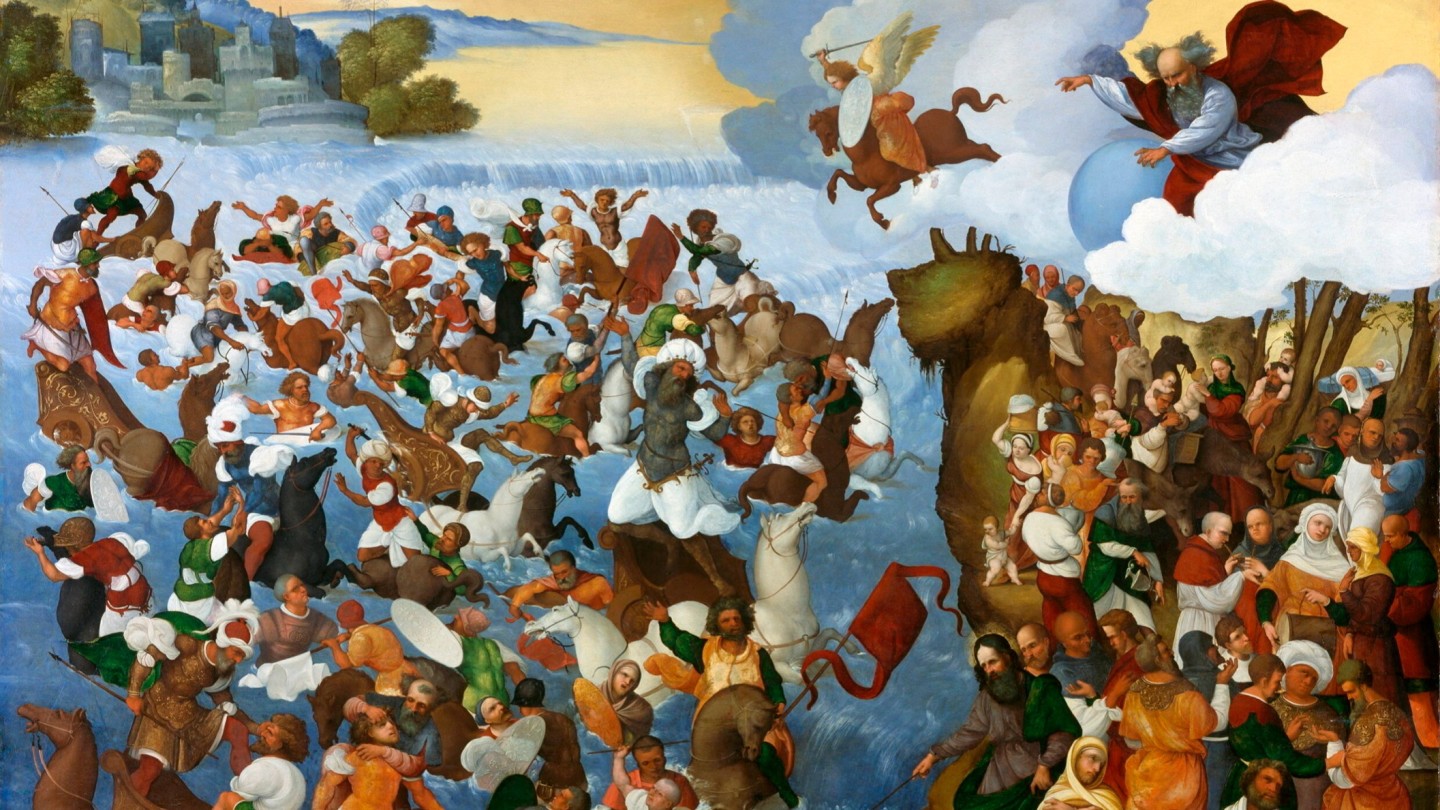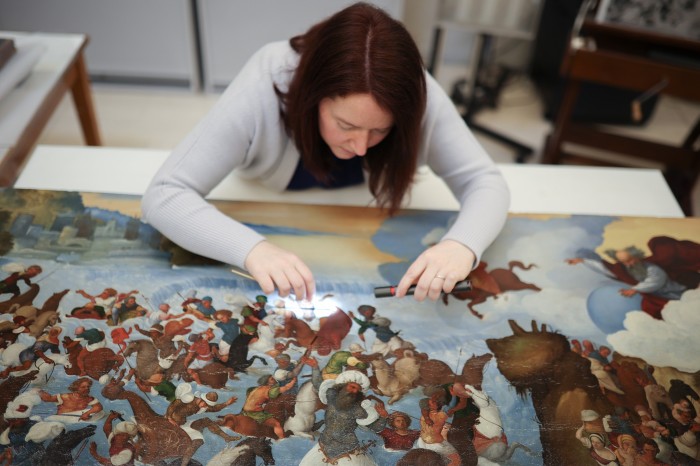Virtuoso Renaissance painting wins restoration prize

Roula Khalaf, Editor of the FT, selects her favourite stories in this weekly newsletter.
At first glance, Ludovico Mazzolino’s “The Crossing of the Red Sea” appears to have weathered the past five centuries largely unscathed. The 1521 oil on wood panel depicts Moses and the Israelites reaching safety as the waters engulf Pharaoh’s army in vibrant, multicoloured tones.
Yet the work, which was purchased by the National Gallery of Ireland in 1914, has not been displayed in public for more than three decades because of cracking paint and the structural instability of the panel. It is now being restored in the gallery’s conservation studio thanks to a €25,000 grant from the Tefaf art fair’s Museum Restoration Fund, which will facilitate research into how the panel can be stabilised and which materials can be safely used for retouching.
Mazzolino specialised in small-scale devotional works, several of which are held at London’s National Gallery. “The Crossing of the Red Sea”, which features more than 150 figures, stands out within his oeuvre because of its scale (125cm by 157cm) and elaborate composition.
According to Aoife Brady, the NGI’s curator of Italian and Spanish art, the painting is a “real prestige piece” that was probably intended to wow visitors at the opulent court of Alfonso d’Este in Ferrara. “We get a sense,” she says, “of an artist who’s very confident, at the height of his career, who’s happy to take a panel of this scale and play with it.” Central to that virtuoso achievement is Mazzolino’s innovative use of skewed perspective, which emphasises the panic and disorder of the drowning soldiers. That stylistic feature points to Mazzolino’s familiarity with northern artists such as Albrecht Dürer. The painting’s vivid, crowded portrayal of divinely ordained suffering also suggests an affinity with Hieronymus Bosch.

The panel consists of three pieces of wood connected by original dovetail joints, which will be a focus of restoration efforts. The cracking paint is concentrated around these joints, which are also causing movement across the panel. According to conservator Maria Canavan, the panel “is very reactive” and could be damaged by small fluctuations in humidity. Research into Mazzolinos held in other European collections is expected to shed light on how the painting can be secured. One potential solution would involve sealing the work in a temperature-controlled special casing known as a microclimate box that enables continual atmospheric monitoring.
“We are shifting the balance in conservation,” says Canavan, “towards spending more time on the research and testing phases, and less on the treatment phases.” Her aim is to devise a programme of “targeted” interventions that will allow “The Crossing” to return to display by next year. The research should additionally yield insights into Mazzolino’s process, which remains little studied. Infrared photography has already revealed a dozen or so sketched figures that were left out of the painting.
Once the restoration is completed, “The Crossing” will return to the walls of the gallery alongside a collection of Italian Old Masters that includes works by Fra Angelico, Titian and Tintoretto as well as Caravaggio’s “The Taking of Christ”. The latter is celebrated for its earthy, grizzled facial expressions. Mazzolino’s ruddy-faced Moses similarly looks like he’s had a very long day.

Comments